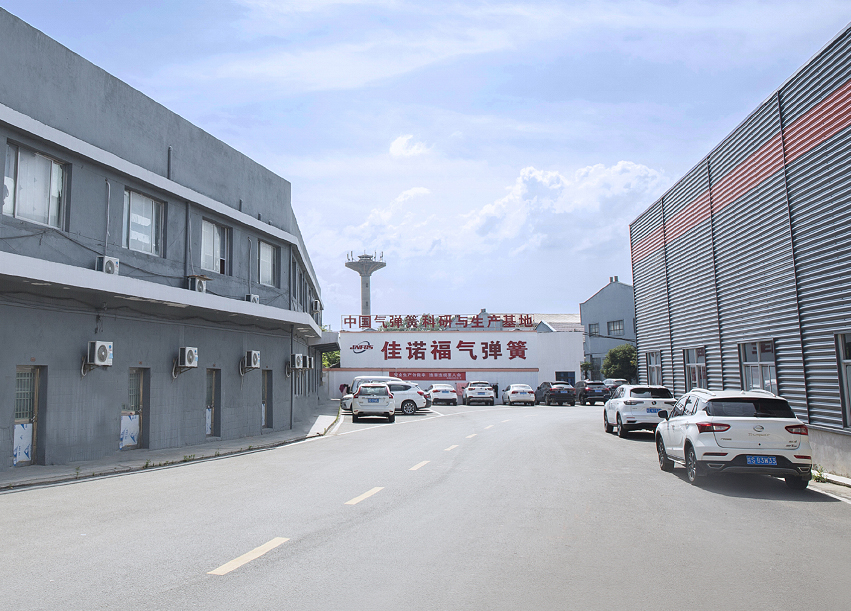How adjustable are handle-operated gas springs, and what level of control do they provide?
Handle-operated gas springs are designed to provide a certain level of adjustability and control over the force they exert and the position they maintain. The adjustability primarily comes from the ability to manually manipulate the gas spring's handle to control its extension or compression. Here are key aspects related to the adjustability and control of handle-operated gas springs:
Handle Mechanism:The handle mechanism is the key component that allows users to manually adjust the gas spring. The handle may be designed to rotate, pivot, or move in a specific way to control the gas spring's movement.
Variable Force:Handle-operated gas springs can offer variable force control. By manipulating the handle, users can adjust the force exerted by the gas spring according to their requirements. This feature is particularly useful for applications where precise force control is needed.
Stepless Adjustment:Some handle-operated gas springs provide stepless adjustment, allowing users to set the force at any desired level within the gas spring's specified range. This level of adjustability is valuable in applications where fine-tuning the force is critical.
Locking Positions:Certain handle-operated gas springs may have the capability to lock into specific positions. This feature allows users to set the gas spring at a particular height or extension, providing stability and preventing unintentional changes.
Incremental Adjustment:In some cases, handle-operated gas springs may have incremental adjustment options. Users can adjust the force in discrete steps, providing a level of control that suits applications with specific force requirements.
Ease of Operation:The handle is designed to be user-friendly, allowing for easy and intuitive operation. Users can comfortably adjust the gas spring without the need for specialized tools or complex procedures.
User Feedback:Some handle-operated gas springs may include features that provide users with feedback on the force level or position. This feedback could be visual or tactile, helping users accurately set the gas spring to their desired parameters.
Compatibility with Control Systems:Depending on the application, handle-operated gas springs may be compatible with control systems that enable automated adjustment or integration with other components. This can enhance overall control and flexibility.
Precision and Accuracy:The design and manufacturing of handle-operated gas springs can influence the precision and accuracy of force adjustment. High-quality gas springs offer reliable and repeatable adjustments, ensuring consistent performance.
Load Balancing:Handle-operated gas springs can be used in applications where load balancing is important. Users can adjust the force to match the load requirements, optimizing the performance of the gas spring in different conditions.
Can easily fine-tune the force exerted by the gas spring using the handle?
Handle-operated gas springs are designed to allow users to easily fine-tune the force exerted by the gas spring using the handle. The handle mechanism provides a manual means for adjusting the gas spring's extension or compression force. Here's how the fine-tuning process generally works:
Handle Operation:The gas spring's handle is manipulated by the user to control the movement of the rod or shaft within the gas spring. The handle can typically be rotated, pivoted, or otherwise adjusted, providing a manual means of changing the force exerted by the gas spring.
Variable Force Control:By adjusting the handle, users can vary the force applied by the gas spring. This allows for precise control over the extension or compression of the gas spring based on the specific requirements of the application.
Stepless Adjustment:In many cases, handle-operated gas springs offer stepless adjustment, meaning users can set the force at any desired level within the gas spring's specified range. This provides a continuous and smooth adjustment without predefined increments.
Locking Positions:Some handle-operated gas springs may have the ability to lock into specific positions. This feature allows users to set the gas spring at a particular force level and lock it in place, providing stability and preventing unintentional changes.
User-Friendly Operation:The design of the handle is typically user-friendly, making it easy for individuals to operate without the need for specialized tools. This user-friendly approach allows for quick and intuitive adjustments.
Load Matching:Users can fine-tune the force exerted by the gas spring to match the specific load requirements of the application. This is particularly valuable in situations where varying loads are encountered, and precise force control is necessary.
Feedback Mechanisms:Some handle-operated gas springs may incorporate feedback mechanisms, such as visual indicators or tactile cues, to assist users in fine-tuning the force. This feedback enhances the user's ability to accurately set the gas spring to the desired parameters.
Precision and Consistency:High-quality handle-operated gas springs are designed for precision and consistency in force adjustment. This ensures that the gas spring reliably performs within the specified force range and maintains consistent behavior over time.




